How to Quiet Down Your Generator
As the sun rises, there’s a hush over the campground. Zen surrounds you. Yesterday’s high blood pressure is history. You brew a cup of coffee, build a fire, and settle in for a morning of quiet….
until your neighbor hits a switch, and his generator ROARS to life.
As it settles into its mechanical rhythm, you watch your Zen go up in smoke.
Personally, I’d probably run my generator a bit more if it wasn’t so loud. I cringe thinking about waking my camp neighbors to make breakfast. We can make do with the propane-run coffee maker and a frying pan, but I’d love to use the microwave. My battery needs to be recharged after a long night running the heater fan. Sadly, our 30-year old built-in Onan generator loves the sound of its own voice, coming out strong at 70db. It’s a moral dilemma.
There are several types of portable generators. You may have seen the “open-frame” type being used on a job site or for off-grid power. These generators can produce enough power to run an entire household of appliances and/or power tools. These are fine when used in conjunction with an off-grid solar system, because they charge the batteries and the “inverter” is a separate piece on the system. They are less expensive, because little effort has been made to make them quiet.
Some of the new inverter/generators are remarkably quiet. These are generally modest power generators, and fairly expensive because much engineering has gone into noise abatement construction. Inverter/generators are great because they produce clean, stable 110 volt, 60 Hz. AC power that your electronics needs.
How Noise from Portable Generators is Measured
Using a noise level meter, the volume is measured in decibels or db. Generator manufacturers typically take their measurement at 23′ away from the generator running at 1/4 load. You may need to dig into the generator’s specifications to find this information, as most manufacturers would rather you didn’t ask.
It’s important to know that for every increase of 10 db, the noise level is 10 times louder. Therefore, just a few db difference can make a huge difference in a generator’s roar.
Steps to Quieting Down Your Portable Generator
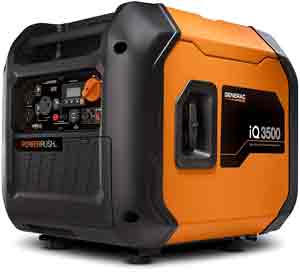
40% Quieter than Honda* Advanced inverter technology and enclosure design provide optimal quiet performance (* Over 5 dB(A) quieter than the EU3000is. Click on image for details.
Buy the quietest one you can
Honda has a reputation for being the quietest generator out there, but Generac claims to be 40% quieter than the Honda. They do this by using a unique alternator that makes less noise, and enclosing the whole package in a sound-absorbent plastic case. This is fine for the smaller “inverter” type generators. But what about the bigger powerhouses?
Buy only the size of generator that you will need
Many of the small inverter generators, like the Honda shown above, come with a parallel connecting cable to use two of them together if you need more power. Using these two generators at the same time only raised the noise level 3 db, or a 25% increase.
See the chart on this page to determine how big of a generator you will need. The more power they produce, the louder they run.
Move the generator away from you
Use a very heavy-duty extension cord and move the generator 25 feet or more away from your structure. Make sure the exhaust is pointed away from you. If you are in a campground, be mindful of your neighbors. They don’t want to hear your generator either.
Take your genny out of your truck bed so it doesn’t reverberate the entire vehicle (if you can lift it). Some of these claiming to be lightweight still tip the scales at over 100 lbs.
Try a Sound Attenuation System to Quiet Down Your Generator
Blocking the sound from getting to your ears is the main objective. There are several types of sound attenuation systems.
Add a larger muffler
Mufflers may help a little, but not as much as you’d think. Most of the noise comes directly from the moving parts rather than the exhaust pipe. An exhaust pipe extension, like the one shown on the left, will be helpful for an RV’s built-in gennny by moving the fumes, heat, and some noise up over the roof of the RV where it can easily dissipate.
Some folks have welded on automobile mufflers (see that in this YouTube® video) and it did help some. The tests revealed about a 5 db reduction with the better muffler. Some generator manufacturers make large mufflers as an add-on.
Stick it in a bucket of water
Not the generator, just the exhaust. One easy muffler is to buy a tubing exhaust extension and stick the end in a bucket of water. Each manufacturer has their own extension adapter. The one shown here is for Champion generators. It costs $79.95* and includes a 5′ hose.
Sound deflectors
The photo on the right shows a generator surrounded by simple sound deflectors just lying on the ground. When the owner leaned the pieces of wood against the generator, the reading on the db meter, shown in the foreground, actually dropped by 10 db.
Admittedly a “redneck” method of quieting your generator, this lowers the volume a whopping 10 db. Click on image to see the YouTube® video about it.
Build or buy a sound-inhibiting baffle box
Most of the ready-made baffle boxes are designed for home use and not easily transportable. Put on your “clever” hat and design a baffle box that works. YouTube® has many videos on this subject.
You can use acoustic foam panels. They are 3/4″ thick closed-cell foam, 32″ x 54″. You’d need to rig up a support system like PVC tubing or tent poles to hold them in place.
Quiet Down a Large Open-Frame Generator
Here’s a YouTube® video showing the construction of a baffle box using a resin storage shed, an attic fan, and a few other locally sourced parts. He adds a vent for the intake air and passes the exhaust through the wall with a galvanized wall thimble.
I think, instead of the chimney terminator kit I would use an extended muffler instead.
It really does the job well:
Here’s another good YouTube® video of a guy making a baffle box and converting his Duromax XP1200EH generator over to natural gas. His box lowered the decibels from 81 db to 69 db.

He used this Propane/Natural Gas Tri-Fuel Conversion Kit to get his generator running on natural gas.
The sound-proofing material is Rolux Wool Insulation, which can withstand temperatures up to 1200°F.
The only change I would make is running the ground wire to the existing house ground, because adding a second ground to a house can cause ground loop current that makes a loud hum in audio equipment.
Zombie Box
If money is no object, you can buy a baffle box already made for about $2,649.00*.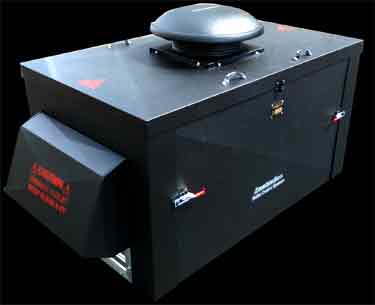
The steel ZombieBox, shown here, will cut your generator’s noise emission by 50% and extend your portable generator’s life by keeping it clean and out of the weather. It’s also theft-proof. Run your generator as long as you need without the neighbors complaining!
ZombieBox is the WORLD’S FIRST, and only, patented noise-reducing portable noise control system. The unique universal design allows anyone with equipment the ability to reduce the noise intensity of portable generators and other machinery without inhibiting airflow or cooling requirements.
Perfect for festivals, events, contractors, food trucks, vacation homes, cabins and more! Designed to be portable and self-supporting, these innovative appliances can be assembled on location, without tools, in minutes!
Zombiebox Generator Running Cover & Noise Barrier
Here’s a simpler version of the enclosed Zombiebox that offers a 50% reduction in noise and protection from rain or snow.
It’s shown in “shelter” configuration which reduces noise 15% but if you lay it on it’s side in “barrier” configuration you get the 50% noise reduction.
It folds up for easy transport.
Add a “Running Tent” to quiet down your generator and keep the rain off
The larger open-frame portable generators can use a running tent, which is primarily intended to keep your generator safe from weather while using it. This is a good idea, because generators have sensitive electronics (especially the generators with inverters built-in). The added benefit is that they baffle some of the sound and quiet down your generator.
Add Rubber Feet to quiet down your generator
If your generator will be on a solid surface, rubber feet will help acoustically disconnect it from the flooring. This will lessen the sound transmission through a shed, the bed of your truck, or an attenuation box. Rubber feet are not needed if you put the generator on the ground.
Use a high-density rubber mat under a open-frame portable generator like the one shown above. If you are building an acoustic box, line the bottom of the box.
For more information on Inverter/Generators see this page:
See the chart on this page to determine the size of generator you need: Running RV appliances like an air-conditioner off grid.
For more off-grid energy sources visit: Best Off-Grid Energy Sources.
If you have a picture of your generator quieting system send to me through Facebook messenger
Leave your comments below.


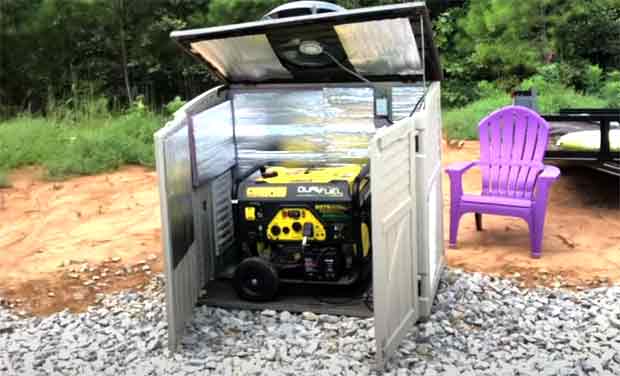
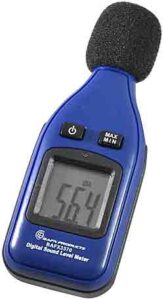
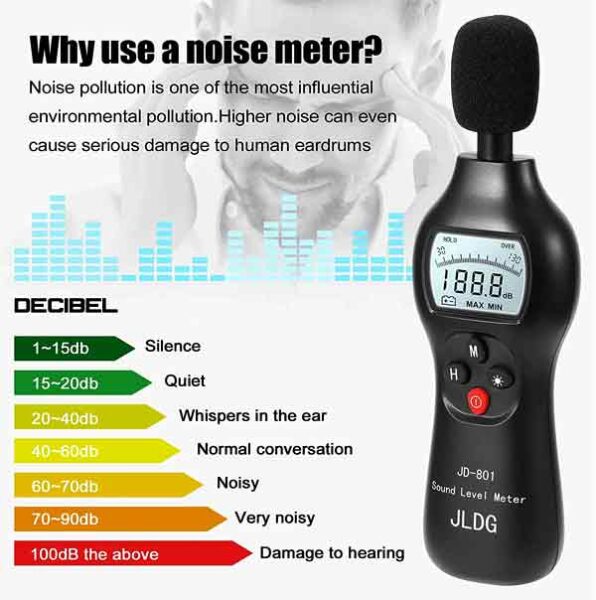
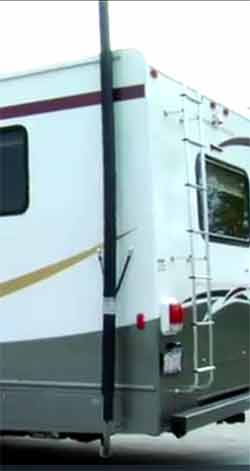
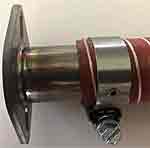
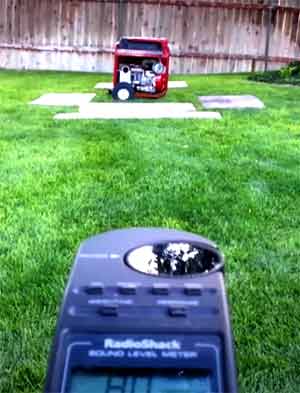
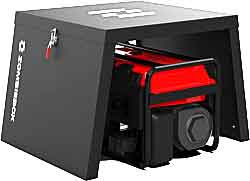
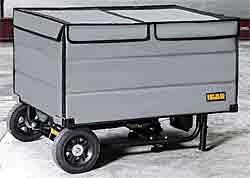


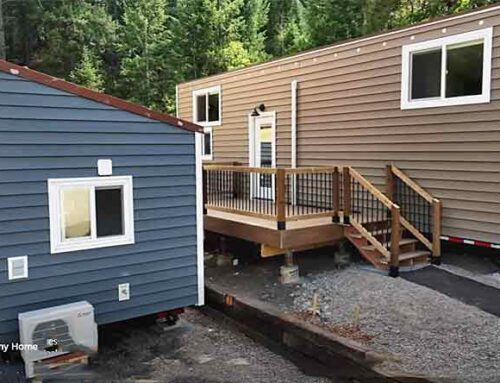
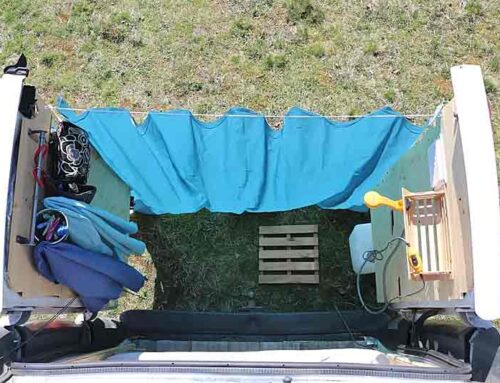
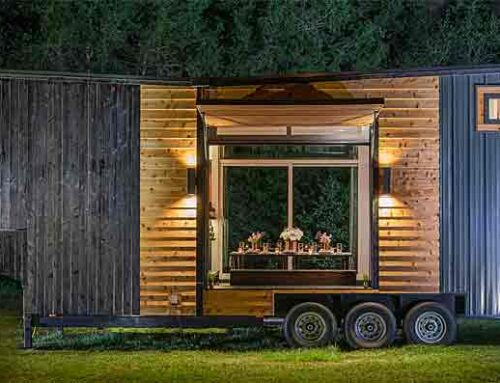
Leave A Comment